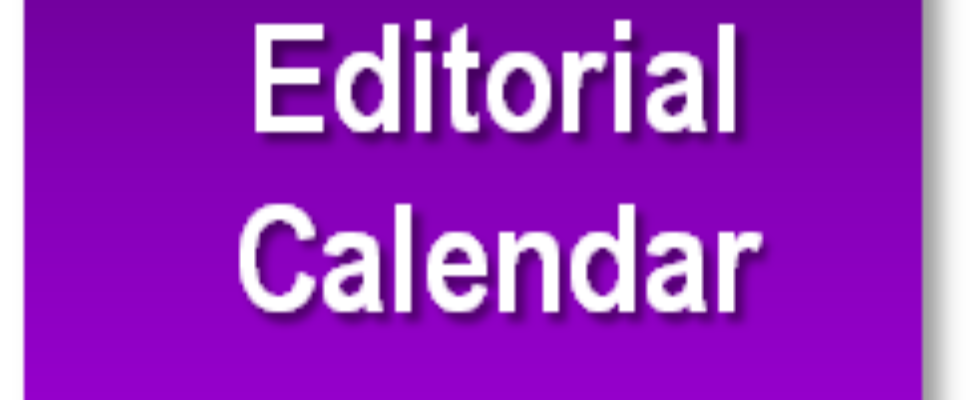How To Create An Editorial Calendar
What is an Editorial Calendar?
According to Wikipedia, an editorial calendar is used by bloggers, publishers, businesses and groups to control the publication of content across different media (newspapers, magazines, blogs, email newsletters, and social media outlets).
Publishers also extract some of their editorial calendar data and make the data publicly available to attract advertisers. Public relations professionals also use these abbreviated editorial calendars to try to place stories for their clients. However, the primary purpose of editorial calendars is to control the publication of content to ensure regular appearance of content that interests readers and advertisers.
Traditional print publishers have used editorial calendars in some form for centuries to manage the publication of books, magazines, and newspapers. The internet has dramatically increased the number of publishers who also need to organize content and ensure content is published at regular intervals.
The Process of Writing Good Content
Editorial calendars are used to define and control the process of creating content, from idea through writing and publication. An individual or small business might have this publishing process:
- Brainstorm content ideas to publish, where to publish, and when to publish
- Write each piece of content based on the publication schedule
- Edit each piece of content (addressing keywords, adding meta data, images, etc.)
- Publish each piece of content
Whether the publishing process is simple or complex, the movement is forward and iterative. Publishers encounter and cross a number of hurdles before a piece of content appears in print, on a website or blog, or in a social media outlet like Twitter or Facebook.
The details included and tracked in an editorial calendar depend upon the steps involved in publishing content for a publication, as well as what is useful to track. Too little or too much data make editorial calendars difficult to maintain and use. Some amount of tweaking of editorial calendar elements, while using the calendar to publish content, is required before they can be truly useful.
There are two options that I recommend considering when it comes to creating an editorial calendar. Depending on your workstyle, you may be interested in either the excel spreadsheet option or the WordPress plugin option.
Editorial Calendar in Excel Spreadsheet Format
Below is a downloadable excel spreadsheet of the editorial calendar. As you’ll see , this spreadsheet will help you streamline your content strategy without the stress of preparation or organization.
[gview file=”http://www.hammondmediagroup.com/wp-content/uploads/2013/10/HMG-Editorial-Calendar-Template1.xlsx” save=”1″]WordPress Editorial Calendar Plugin
Did you remember to write a post for next Tuesday? What about the Tuesday after that? WordPress doesn’t make it easy to see when your posts are scheduled. The editorial calendar gives you an overview of your blog and when each post will be published. You can drag and drop to move posts, edit posts right in the calendar, and manage your entire blog.
In the video below, you can view the options available in the highly rated (five stars) Editorial Calendar plugin.
Editorial Calendar Plugin Features
- See all of your posts and when they’ll be posted.
- Drag and drop to change your post dates.
- Manage your drafts with our new drafts drawer.
- Quickedit post titles, contents, and times.
- Publish posts or manage drafts.
- Easily see the status of your posts.
- Manage posts from multiple authors.

